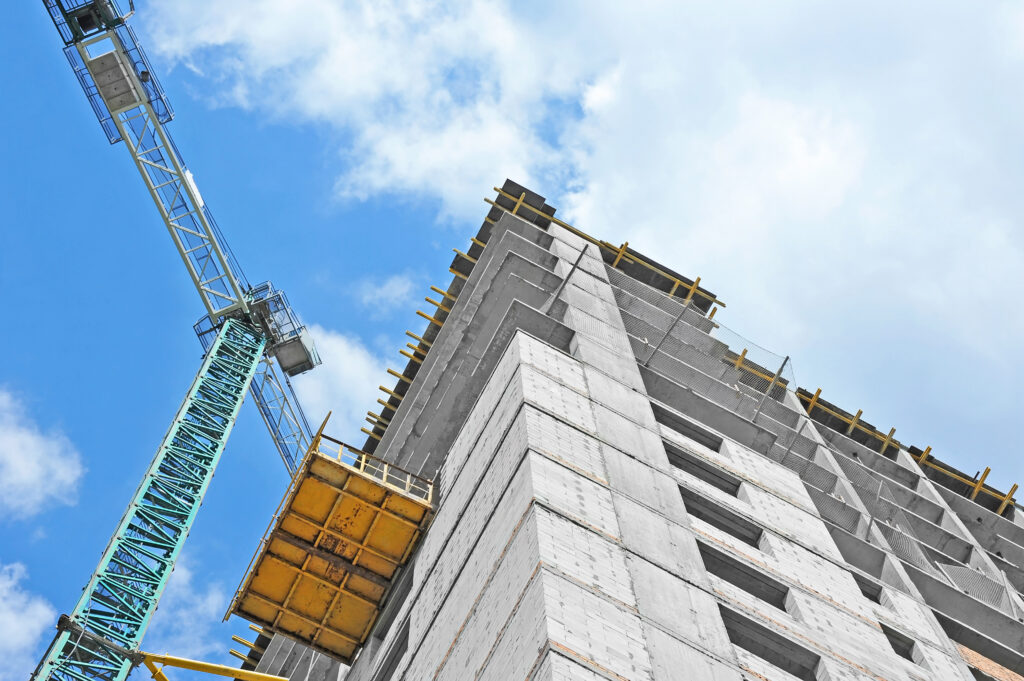
With the turn of the calendar page, we’ve left 2020 behind, but the events of the year have created shifts in thinking and action that will have long-term effects on every industry, including multifamily construction.
Initial slowdown
The COVID-19 pandemic initially slowed, and in some cases, halted construction across nearly all industries. Supply chain issues and stay-at-home orders made it difficult to begin new projects or complete existing ones. As time went on, though, construction ramped back up with new challenges, including providing scarce PPE for workers and implementing social distancing guidelines.
In the pandemic’s early days, 76% of construction companies reported that they faced delays in permitting, and 59% said they saw delays in starts. In addition, 62% of developers said they experienced construction delays related to a local or state moratorium, with 82% reporting that their moratoriums included multifamily construction projects.
Long-term changes
Stay-at-home orders and the shift to working from home have changed what apartment hunters are looking for in a potential home.
Pools and gyms, spaces that in many multifamily dwellings have been closed because of COVID, are sliding down the priority list in favor of more green space and access to biking/running paths. Doug Bartels, senior vice president – development for Russo Development in Carlstadt, New Jersey, tells Real Estate New Jersey:
“Firepits and open courtyards, which some may have considered nice add-ons previously, are now on renters’ ‘must-have lists’ right below things like proximity to public transportation for commuting.”
Other must-haves that impact construction are the need for dedicated workspaces for those continuing to work from home as well as touchless common surfaces and better ventilation systems.
Interior changes aren’t the only thing apartment hunters are considering. The pandemic has sped up the need for more apartments outside the urban environment. According to the National Association of Home Builders’ (NAHB) Home Building Geography Index, metro areas posted a 4% decline in multifamily construction projects while construction in the suburbs of large metropolitan areas dropped nearly 5%.
Lower-density cities are becoming more attractive to people who are no longer tied to an office building for their work as many companies institute long-term work-from-home options. The health risks brought on by the pandemic in high-density areas have many rethinking where they want to live.
Litac Mirali, an NAHB economist, writes:
“An unavoidable lesson of the public health crisis associated with COVID-19 is that major metropolitan areas faced greater challenges. High-density lifestyles, championed by some planners over the last decade as a rival to suburban living, proved to be vulnerable to a virus due to crowded living conditions, dependency on mass transit, and insufficient health and public sector infrastructure.”
What does it mean for new construction?
Builders in the multifamily space will need to rethink the way they design and construct buildings, and perhaps shift their focus to lower-density metropolitan areas. While big cities aren’t going anywhere, the need for new construction in those areas is declining while smaller cities like Madison, Wisconsin, are poised for growth.
The desire for new features and new locations can definitely add cost to the building process, but construction loans are still a viable option for builders. In early January 2021, construction loan rates ranged from 4.75-9.75%, with terms from six to 36 months.
Loan options
When deciding on a new construction loan, it’s important to understand the options.
Conventional loans are backed by private lenders like banks and other financial institutions. The benefits of a conventional loan include the opportunity to recapitalize when the project is finished.
FHA/HUD loans offer the lowest interest rate along with a longer-term (35 years), but it can be readily paid off at any time with a tax-deductible prepayment penalty or fully assumed by a new property owner after a 0.05% one-time fee.
Find the right loan
Choosing a loan for multi-family construction can be daunting, but our proprietary loan-matching tool can streamline the process. Simply enter the location of the building, the number of units and the building class along with construction cost, gross income and expenses, and get presented with an estimated mortgage amount and several loan options from our lender partners like Fannie Mae, Freddie Mac and HUD.
Once you’ve determined the best type of loan for you, simply upload the required documents and examine your offers. The MultiFamilyDebt loan platform makes the process simple by keeping all your required documentation in one place, taking the stress out of applying for a loan and helping you cut through the red tape.
As the needs of apartment hunters change in a post-pandemic nation, MultiFamilyDebt.com can present you with information and options to help you pivot quickly to make sure you have what you need to meet those needs. To learn more about multifamily commercial loan offers, and to review custom loan offers, visit MultiFamilyDebt.com today.
